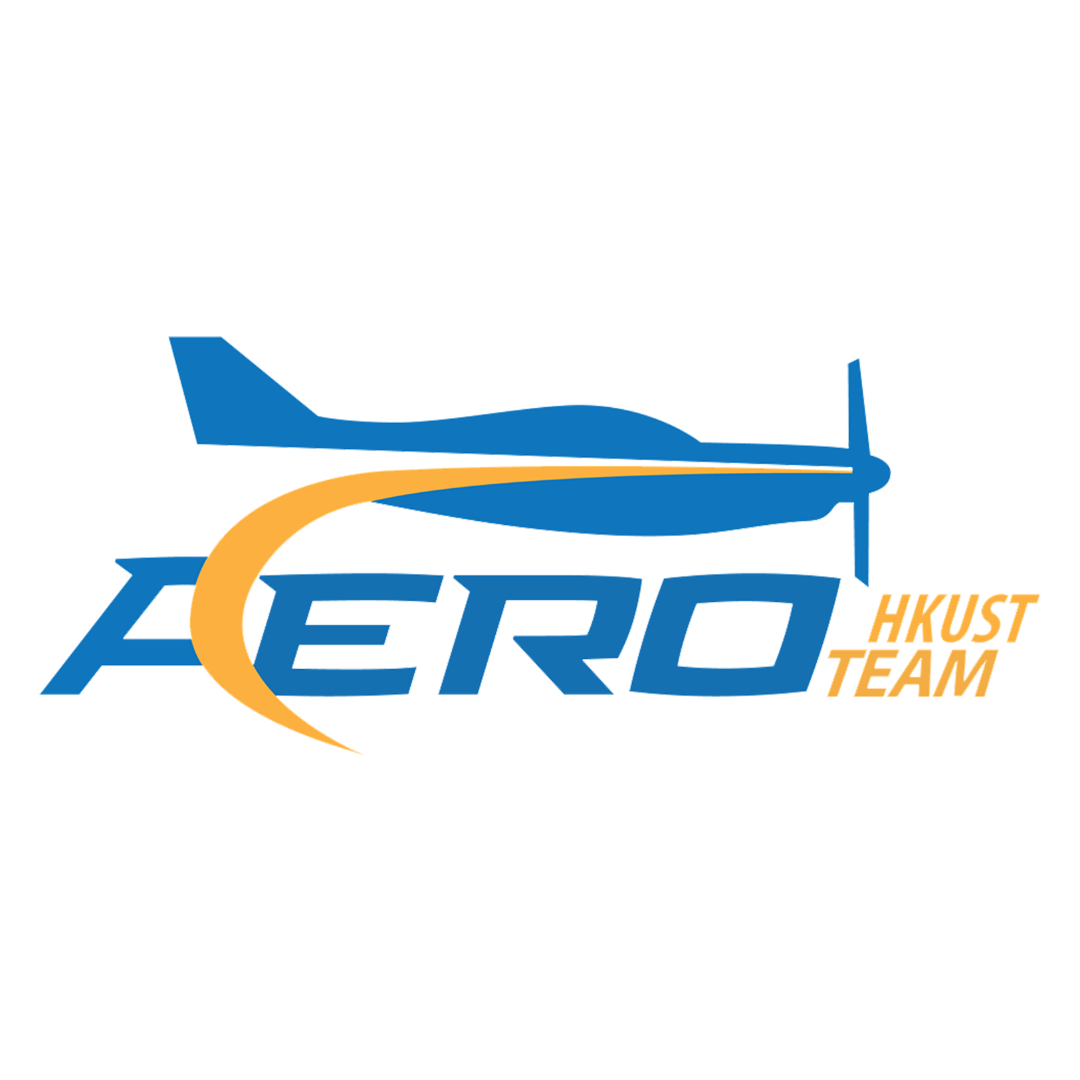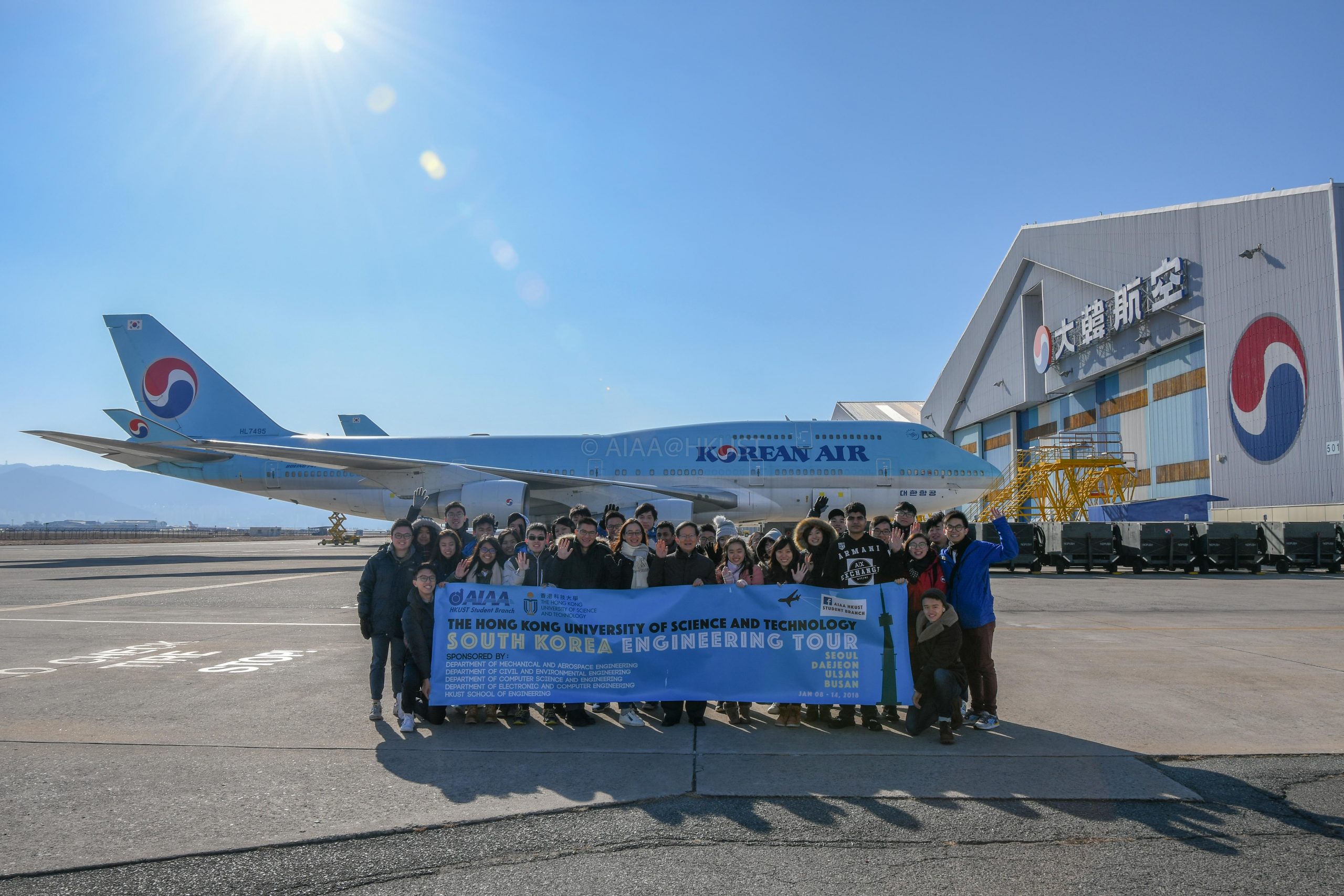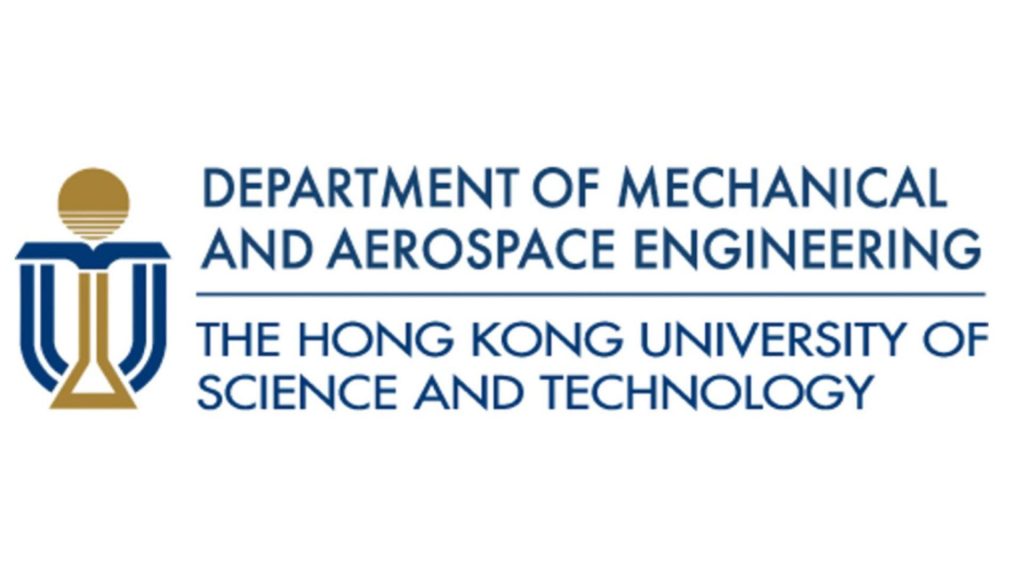The American Institute of Aeronautics and Astronautics Student Branch at HKUST (AIAA@HKUST) successfully organized the South Korea Engineering Tour on 8-14 January 2018. Six AIAA committee members, 24 engineering students and three faculty members participated in the week-long trip to Seoul, Daejeon, Ulsan and Busan. The group visited a total of nine engineering-related companies and universities during the seven day trip. This trip was co-sponsored by the Department of Mechanical and Aerospace Engineering (MAE), Department of Civil and Environmental Engineering (CIVL), Department of Computer Science and Engineering (CSE), Department of Electronic and Computer Engineering (ECE), and the HKUST School of Engineering.
The South Korea Engineering Tour began in Seoul, where the group visited Samsung D’light and the Korea Aerospace University (KAU). The group then travelled to Daejeon to visit the Korea Aerospace Research Institute (KARI), Satellite Technology Research Center (SaTReC) and KAIST. The group then continued on to Ulsan and toured the facilities at the Hyundai Motors Ulsan Plant and Hyundai Heavy Industries. Finally, the group travelled to Busan and visited the Korean Air Tech Center and Doosan Heavy Industries.
Days 1 & 2
Samsung D’light
The first destination for the group was Samsung D’light. Located within the Samsung Electronics building in Seocho-dong in Seoul, Samsung D’light serves as a global exhibition space showcasing the latest products and technology by Samsung Electronics. “D’light” is constructed from the words “digital” and “light”, which aligns with Samsung’s vision of being a “guiding light to the digital world”. Spread over three floors, Samsung D’light offered participants the chance to interact with the latest digital gadgets and to experience an ultra-realistic Virtual-Reality (VR) rollercoaster utilizing the Samsung Gear VR headset.
KAU
On the second day in Seoul, the group visited KAU. KAU is one of the leading aerospace universities in the world, with significant contributions to the aerospace industry in South Korea and around the world. Their curriculum covers a wide spectrum of topics in the field of aerospace including aircraft and spacecraft design, flight operations, air traffic management, logistics, air and space law, and airport management. KAU is also currently conducting co-research with firms such as General Electric and Airbus. During our visit to KAU, students had the opportunity visit the Advanced Unmanned Aerial Systems (UAS) Research Center, the Intelligent Vibration Control System laboratories, the Air Traffic Control (ATC) simulation room, as well as observe flight tests of the latest UAS at their private runway facility.
Day 3
KARI
The first destination on a very packed Day 3 was KARI. KARI, recently designated as South Korea’s National Space Development Agency, was established in 1989 and is responsible for the R&D required to make aeroplanes, satellites, and rockets in South Korea. Participants were first introduced to the satellites developed at KARI, including the KOMPSAT, STSAT and COMS series of observation satellites. Students were also given the extraordinary opportunity to see actual flight-models being prepared for future launch into space.
SaTReC
The group then visited SaTReC, a world-leading provider of solutions for Earth observation missions. Founded in 1999 on the campus of KAIST by engineers actively involved in the first domestically developed satellite KITSAT-1, it has since played a part in over 25 domestic and international space programs. Students were keen to learn about the latest satellite, being prepared ahead of its launch later in 2018 aboard an American Falcon 9 launch vehicle.
KAIST
The final destination of Day 3 was KAIST. Students and faculty from the KAIST Aerospace Department welcomed the group with a short presentation about KAIST, which was reciprocated with a short presentation of HKUST from Professor Larry Li of the MAE Department, and a few students from the AIAA HKUST Student Branch. Afterwards, students were given the opportunity to tour the KAIST Aerospace Labs (Composite materials Lab and Hypersonics Lab) where students had the chance to experience the strength and lightness of composite materials fabricated by the labs, as well as look at the wind tunnel, capable of conducting studies on hypersonic flows. The group then visited ICARUS, a flight research team founded in 1996, with research focuses on Micro Aerial Vehicle (MAV), Smart Unmanned Aerial Vehicle and Ornithopter. Finally, the group had a wonderful dinner with a group of KAIST students and faculty, where everyone was keen to learn about each other’s university and country.
Day 4
Hyundai Motors Ulsan Plant
Day 4 took the group to the city of Ulsan, the industrial powerhouse of South Korea. The group visited the world’s largest automobile assembly plant – the Hyundai Motors Ulsan Plant. The five-factory complex running at max capacity is able to produce a car every ten seconds, and covers a landmass of approximately 700 football pitches. Students were first invited to look around on the showroom floor showcasing the latest vehicles such as the Genesis line, the eco-friendly Ioniq, and sportier vehicles such as the Veloster. This was followed by a plant tour of Ulsan Factory 3. Factory 3 is responsible for the assembly of the i30, Elantra/Avante, and the latest Ioniq. Students were able to observe vehicles at different stages along the final assembly line, which is the final stage of manufacturing after the press shop, welding shop and paint shop. After the plant tour, participants were taken to the massive Hyundai Motor’s shipping port, where completed cars are prepared and loaded onto car-carrier ships for export. Participants were able to watch the ships being loaded in real-time by an expert team of drivers, who are required to maneuver their way and park onto the ships at high speeds with their mirrors folded.
Hyundai Heavy Industries Ulsan (HHI)
Students then visited Hyundai Heavy Industries (HHI), the world’s largest shipbuilding company. HHI currently holds roughly 10% of the market share in the global shipbuilding industry, and is capable of building all types of ships including military ships. So far, HHI has delivered over 2000 ships, equivalent to over 200 million Deadweight tonnage (DWT) to companies worldwide. Students were given the opportunity to tour the tenlarge-scale drydocks operated by HHI, with several occupied by ships soon to be delivered to companies in Hong Kong.
Day 5
Korean Air Tech Center
Day 5 took the group to Busan, a coastal city located at the southern tip of the country. Students first visited the Korean Air Tech Center of the Korean Air Aerospace Division. Founded in 1976, the Korean Air Aerospace Division was committed to creating the first domestically produced aircrafts – a licensed built version of the McDonnell Douglas 500MD, soon followed by the “JEGONG HO”, the Korean variant of the Northrop F-5E Tiger II. The Aerospace Division has since branched out to supplying components to aerospace Industry giants such as Airbus, Boeing and Embraer, as well as developing Unmanned Aerial Vehicles (UAV) in house. In addition to R&D capabilities, the Korean Air Aerospace Division also conducts Military Aircraft Maintenance and Upgrades for the Republic of Korea Air Force and US Air Force, Commercial Aircraft Maintenance, Repair and Operation (MRO) services, as well as component maintenance for commercial and military aircraft. Students were presented with a once-in-a-lifetime opportunity of seeing military aircraft such as the Fairchild Republic A-10 Thunderbolt II, McDonnell Douglas F-4 Phantom II, McDonnell Douglas F-15 Eagle, General Dynamics F-16 Fighting Falcon, Sikorsky UH-60 Black Hawk, Sikorsky CH-53 Sea Stallion and Boeing CH-47 Chinook in various stages of maintenance. Finally, students were also able to look at fuel-saving Sharklets, developed and manufactured by Korean Air for the Airbus A320 Family, and latest A330neo series of aircraft.
Doosan Heavy Industries
Finally, the group visited Doosan Heavy Industries & Construction Co., Ltd in Changwon. Doosan Heavy is South Korea’s leading powerplant specialist, and has made significant contributions to the country’s economic development in the past 50 years through their expertise in power generation plants and desalination plants in 40 countries around the world. Currently, they are the world leader in seawater desalination, and have also delivered more nuclear power plant equipment that any other company over the last two decades. Students visited the Changwon Plant of Doosan Heavy, a four million square meter industrial complex, consisting of its own R&D center, dock, eight large-scale factories, castings, forgings, turbines, generators, nuclear 1/2/3, and boilers. The facility is capable of manufacturing everything by itself, from raw materials to the end product. Not only were students incredibly fortunate to be able to view the casting and forging facilities at Doosan Heavy, students were very lucky to be able to see the 17,000-ton forging press operating in real-time, something even our tour guide said was a rare sight!






